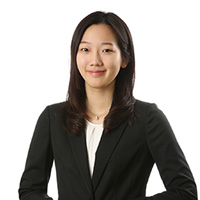
The 2022 presidential election showed that age and regional divides in Korea continue to remain solid.
President-elect Yoon Suk-yeol of the main opposition conservative People Power Party beat his liberal rival Lee Jae-myung from the Democratic Party of Korea by 0.73 percentage points, marking the smallest point gap in the presidential election history of Korea.
The previous record of the smallest point gap was set in 1997, when former President Kim Dae-jung won the election by 1.53 percentage points, beating his rival Lee Hoi-chang, former chairman of the now-defunct Liberty Forward Party.
According to the National Election Commission, Yoon grossed 16.39 million votes across the nation, having 247,077 more votes than his counterpart Lee, who earned 16.14 million votes.
There were 307,542 invalid votes in this election, surpassing the vote gap between the two candidates.
The traditional regional divide in political inclination was maintained in this election.
Daegu and North Gyeongsang Province, long considered a conservative home ground, supported Yoon by 75.14 percent and 72.76 percent, respectively. Lee only gathered 21.6 and 23.8 percent support from each region.
Though the Democratic Party of Korea hoped Lee would be able to put up a fight in those regions as he was born in the area, the results fell short of their expectations.
Yoon, who had put in much effort to earn support from the liberal stronghold of southwestern Honam, failed to win the hearts of the people there. Lee earned 84.82 percent support in Gwangju, 86.10 percent in South Jeolla Province and 82.98 percent support from North Jeolla Province.
Yoon maintained only 10 percent support from the whole Honam region in total. It, however, was the highest support shown to a conservative party candidate in the area.
In the greater Seoul area, Yoon had more votes, earning 50.56 percent support, while Lee got 45.73 percent. In Gyeonggi province, where Lee had been the governor, Lee beat Yoon, gaining 50.94 percent support while Yoon grossed 45.62 percent.
An age divide was also visible in the votes, with the overall results favorable to Lee despite Yoon’s election campaign strategy targeting males in their 20s.
According to an exit poll jointly conducted by the country’s three major broadcasting companies -- SBS, KBS and MBC -- 47.8 percent of those in their 20s or under supported Lee, while 45.5 percent rooted for Yoon.
Some 58 percent of females in their 20s voted for Lee, while 58.7 percent of males in their 20s voted for Yoon.
The voter turnout is estimated to be at 68.4 percent for women in their 20s and 62.6 percent for men in their 20s.
Though it had been typical for a candidate from the conservative party to be endorsed by an older age group, the President-elect Yoon focused his efforts on including males in their 20s to his group of supporters. This was based on the successful rise of 36-year-old Lee Jun-seok, the chairman of the People Power Party who took the top leadership role of the party despite his relatively young age.
In a counterattack, Lee Jae-myung focused on branding himself as a candidate who cares about gender equality, targeting young female voters.
Some 64.8 percent of those in their 60s supported Yoon, while 32.8 percent supported Lee. For those in their 70s or older, 69.9 percent supported Yoon, while 28.5 percent voted for Lee.
By Im Eun-byel (silverstar@heraldcorp.com)





![[Herald Interview] How Gopizza got big in India](http://res.heraldm.com/phpwas/restmb_idxmake.php?idx=644&simg=/content/image/2024/11/20/20241120050057_0.jpg&u=20241120164556)


![[KH Explains] Dissecting Hyundai Motor's lobbying in US](http://res.heraldm.com/phpwas/restmb_idxmake.php?idx=644&simg=/content/image/2024/11/20/20241120050034_0.jpg&u=)
![[Graphic News] 70% of S. Koreans believe couples can live together without tying the knot: survey](http://res.heraldm.com/phpwas/restmb_idxmake.php?idx=644&simg=/content/image/2024/11/19/20241119050098_0.gif&u=)








![[Today’s K-pop] Blackpink’s Jennie, Lisa invited to Coachella as solo acts](http://res.heraldm.com/phpwas/restmb_idxmake.php?idx=642&simg=/content/image/2024/11/21/20241121050099_0.jpg&u=20241121172748)